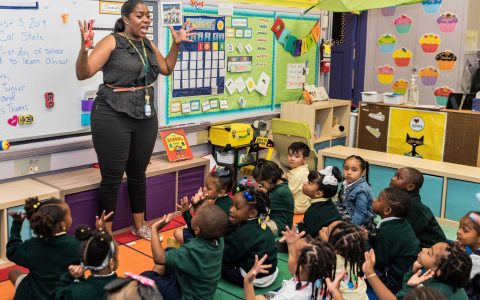In Part 1, we looked at why representing the whole, gorgeous tapestry of U.S. diversity was important in classrooms. The short and sweet version: it’s good pedagogy, it improves learning, and it builds important life and career skills for everyone living in an increasingly diverse country. In Part 2, we’re going to talk about how […]
Culturally responsive instruction is an approach to teaching and learning which incorporates materials that reflect students’ cultural communities and those of different communities. The idea is to draw students in with what is familiar to them (“mirrors”) and also offer new information in areas they are not familiar with (“windows”). This is sound pedagogy that […]
In Part 1 we looked at some hard data that offered reasons why teachers use Teachers Pay Teachers (TPT) and other similar sites to supplement existing curriculum. Reasons ranged from trying to increase diversity and inclusion to trying to make curriculum more engaging for students to trying to fill holes left by district resources. In […]
Online curriculum warehouses are a widely-utilized resource for curriculum materials and also big business. Probably the best known of the bunch is Teachers Pay Teachers (TPT), which boasts on its website that two thirds of U.S. teachers have downloaded at least one item from them, to the tune of a billion downloads in 2020 alone. […]
In Part 1, we looked at the legal definitions for equity, as codified by NCLB and ESSA. Today, we’re going to talk about why meeting the goals set forth in both those acts — that all students receive challenging curriculum and the instruction and the resources necessary to master it and that all are adequately […]
In Part 1 we looked at what Social Emotional Learning (SEL) is and why it’s important for kids. We talked about the five competencies of SEL and how each plays out in highly logical ways in classrooms – ways that are consistent with moral human behaviors like respect, kindness, patience, self-control, perseverance, responsibility, and so […]
In Part 1 we looked at what Social Emotional Learning (SEL) is and why it’s important for kids. We talked about the five competencies of SEL and how each plays out in highly logical ways in classrooms – ways that are consistent with moral human behaviors like respect, kindness, patience, self-control, perseverance, responsibility, and so […]
The Iowa Senate is advancing a bill out of committee that would ban Social Emotional Learning (SEL) for public school students. The bill was introduced by a Republican state senator in late January. The meat of the bill is this: “The department [of Education] shall not display on the department’s internet site or otherwise disseminate […]
In Part I, we discussed how the “intuitive” measures to address potential school shootings – more security, more armed personnel, more expulsions, more mental health resources – actually aren’t effective at preventing shootings. Instead, they mostly focus on dealing with shooters when they’ve already shown up with a gun. At that point, the risk of […]










